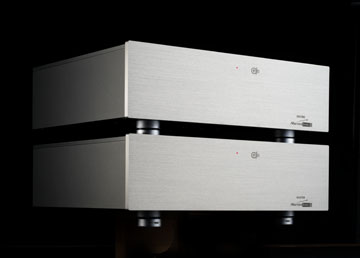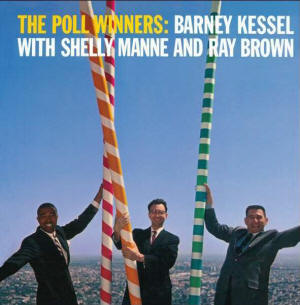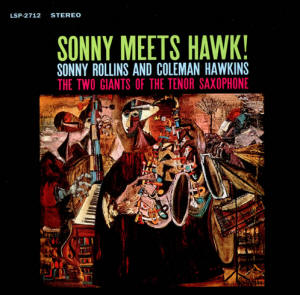|
|
You are reading the older HTML site
Positive Feedback ISSUE 70
cello Encore Amplifiers - The Phoenix Arises from the Ashes as reviewed by Myles B. Astor
Time certainly does fly! Cello Electronics burst upon the budding high-end scene with the release of the then revolutionary, Dick Burwen designed, Audio Palette equalizer. Founded in the mid-‘80s by the legendary and eponymous team of Mark Levinson and the late Tom Colangelo, the company eventually ceased operations fifteen years later. Almost 30 years have flown by since my first somewhat less than memorable visit to Cello's original flagship New York City showroom. For instance, the Cello reference system that included Mark's Amati (nee modded AR LST-1) speakers, sadly didn't exhibit a lick of imaging or dimensionality (nor many other things for that matter). When queried about the imaging issues, the salesman answered with a Moonie-like, pat reply, "Mark doesn't believe in it." So you can easily imagine my surprise when Postive Feedback head honcho Dave Clark asked if I would be interested in reviewing the new Cello Encore amplifiers. Huh? New Cello Encore amplifiers? Perhaps I wouldn't have been so shocked if Barry Willis's report "Cello Electronics on Comeback Trail Says Former VP" (Stereophile 2000) hadn't totally slipped my mind. True to his word, Jim McCullough did indeed rescue and resurrect Cello from the ashes after the company closed its doors in 2000. Nevertheless, Cello, now run by McCullough and currently known as Matthew-James (an amalgamation of the first names of Jim and his son), has flown under the high-end audio radar. (Well except in China and Asia.) According to current owner McCullough, "the basic premise behind Matthew-James' Showroom is to continue the Cello brands sonic tradition started with the Audio Palette, Audio Suite and the Performance amplifier." Matthew-James has since it's rebirth released three new products including the Cello Master Rhapsody amplifier (2003), the Chorale preamplifier (2006)—and the subject of this review—a new version of the Encore amplifier (2010). Timely Highlights The latest Cello Encore monoblock amplifiers are a low feedback, Class A/B design that unlike oh-so many current solid-state amplifiers, run cool as a cucumber. Indeed, those of us running megawattage tube or Class A solid-state amplifiers will drool with envy at the Encore's "coolness" factor during those hot, sticky and humid New York City summers. Plus the Encores don't unlike many megawattage solid-state and tube amplifiers require a forklift to move them! Like the original state-of-the-art Cello Performance amplifier, the new Encore monoblock amplifier is a four chassis affair replete with separate power supply and amplifier modules for each channel. Three feet, conceptually similar to the Aurios or Symposium Rollerblocks, are attached to the bottom of each unit and serve to both isolate the amplifier from the power supply module and both units from the outside environment. According to McCullough, these feet, "reduce broadband intermodulation distortion generated when the amplifier is moved however slightly, and are effective down to a frequency of less than 0.5 Hz." All Cello products including the metalwork, transformers and wiring are still made in Nutmeg state.
For the more technically inclined, the Encore amplifiers utilize a dual monolithic J-FET input stage and two pairs of 250 watt, metal case, bipolar output devices per channel to produce a whopping 500 watts per channel into 8 ohm load. The principle reason for choosing these devices was, "they [bipolar devices] remain stable with a less complex circuit, requiring less negative feedback and are easier to match to each other than other possible choices for this stage. ‘ As with the original amplifier, the Encore amplifier borrows the Performance's original driver boards that are updated with modern parts. In the Encore (and other products), all PCB components are stuffed and soldered by hand. But as Jim McCullough points out, "there are a number of designs that share similar design aspects, yet sound very little like the Encore." The principal goal when designing the Encore according to McCullough was, "to have the lowest levels of distortion while under actual use (as opposed to being on a test bench) through, "reducing all forms of overload (voltage, current and frequency)." This entailed having the circuit work, "under the complex resistive, reactive and regenerative loading which loudspeakers present to an amplifier." To wit, "the driver and output stages are set to have the lowest distortion at small signal levels and to gradually increase with signal level," allowing as described, "…lowest possible distortion under actual listening conditions." Since my reference preamplifier operates only in single-ended mode, Jim McCullough graciously fashioned and provided a pair of single-ended-to-balanced Cello Strings interconnects to run between the conrad-johnson GAT and the Cello Encore amplifier; also as will be discussed shortly, a length of the Cello Strings speaker cable also connected the Encore amplifiers to the Martin-Logan Summit-X speakers. The Cello Strings interconnects and speaker cables are based upon Madrigal's original HPC (helical planar silver) and CPC (co-planar copper) cables, respectively. These low inductance, capacitance and resistance cables are constructed using wide and flat conductors, insulated with Kapton and separated from each other by ultra-thin coatings of PET (polyester terephthalate).
Assembling the amplifier package went without a hitch. The two modules are connected to each other via color coded wires attached to terminal barrier strips. The same barrier strips are, unfortunately, also used for the speaker cables resulting in a more mixed result. Here, the issue is that the size of the "stock" speaker cable lug is too big for the barrier strip. Forcing that speaker cable lug into that tight space would only break the barrier strip. None of the more familiar in-house speaker cables such as the MIT, Transparent, Kubala-Sosna, Kaplan, etc., could be used with the amplifier. In the end, only the Cello Strings speaker cables (and were certainly no slouch when tried with the ART amplifier and perhaps one of the bigger bargains today) or bare wire fit the barrier strips. Other than barrier strips, the only other real issue is the matching the preamp to the amplifier; the amplifier's gain resulted in just a slightest amount of hiss when used with the GAT preamplifier. Finally, both the manufacturer supplied stock and Kubala-Sosna Emotion power cords were used for the review. Sonic Time Machine Allow me to digress for a moment. Martin-Logan's electrostatic speakers often receive an undeserved and bad reputation because of their revealing nature. (Not to mention to try using them—or any dipole speaker—at at a show is suicidal.) As with any great speaker, everything and anything upstream of the transducer including the source material, front-end, electronics, cables, AC quality, etc. is of paramount importance and ruthlessly revealed. No, the Martin-Logan Summit-Xs isn't the best speaker for audiophiles who want every recording to sound pretty, euphonic and the same. No, don't expect them to make a silk purse out of a sow's ear. They are, however, a speaker for those who above all things, value neutrality, hearing the differences between recordings as well as revealing in the little things like tone color, microdynamics/dynamic accents and low level detail. You know. Those quintessential qualities that bring recorded music to life. Those musical qualities that separate the men from the boys, mechanical reproduction from live music. And it will become clearer as we go on that the new Cello Encore amplifiers bring the Summit-X's performance to a higher, albeit a slightly different plane, than do the highly esteemed conrad-johnson ART amplifiers. And did these amplifiers ever elevate both the system's and Summit-Xs' performance! I've never been a power type of guy but the switch from the cj LP140M to the ART monoblocks forever changed my mind. And substituting the Encore for the cj ART amplifiers only reinforced that experience. These 1kW/channel behemoths brought with them a new found, unfettered sense of musical ease. No matter the source or dynamic levels, brass and drums never sounded strained and the music never sounded artificial. Even especially dynamically demanding, large scale orchestral recordings such as the Tape Project's 15 ips reel-to-reel tape release of Reference Recordings Arnold Overtures (Tape Project TP-003) or the sensational Mercury recording of Paul Fetler's Contrasts for Orchestra "Third Movement" with Dorati and the Minneapolis Symphony (Mercury SR90282) didn't faze the Encore amplifiers. Demanding low frequency passages as well as large scale instrumental fare are handled with equal aplomb and never seem to strain the rest of the musical spectrum. All things being equal, there's simply no substitute for power. No less impressive was the Encore amplifier's low noise floor. In fact, the amplifier's noise floor was so vanishingly low that you could literally hear a pin drop on stage. Once again, there was simply no (read none) comparison between my reference cj ART and the Cello Encore amplifiers. This silent background allowed the Encore amplifiers to cross into territory—namely the area of spatial recreation and ambience—that was previously the sole province of tube amplifiers. It's this noise floor, whether it's directly traceable to the electronics, those ever annoying snakes that serve to connect the whole shebang together, connections or AC quality, that allows for that ever elusive ability to capture and recreate the recording venue's boundaries, side walls, ceilings, corners, booths, reflections, reverb, etc. (Which is becoming less and less so on modern recordings, or if it is, the sense of space is added post-recording like canned laughter.) It's that extremely elusive ability to recreate the sense of the original recording space that is a major factor in separating real from recorded music. Take for instance the simply stunning recording of Bach's Quodlibet (Telefunken SAWT 9457-1). Here the Encore amplifiers throw a wide and deep soundstage with the singers (or pair of singers) and harpsichord convincingly portrayed and separated in bold relief like chess pieces on a board. Where the lack of noise also really factors into the picture in the mind's eye is the opening up of the space between the singers and above all, allowing the amplifiers to capture the recording's prodigious reverberant quality, ambience and boundaries. No, the Encore isn't quite the equal of the ART when it comes to capturing the essence or solidity of a hall or dimensionality of instruments or singers; it certainly, however, gives the tube amplifier more than a run for the money. Equally impressive is the Encore's ability to mate and integrate the speed and dispersion characteristics of the Summit-X's electrostatic panel with that of the dynamic woofer. It's very obvious that despite the Summit-Xs being self-powered, that the quality of the main power amplifier (and to a somewhat slightly lesser extent speaker cable) plays an exceedingly important role in matching the characteristics of these two dissimilar driver technologies. As the good folks at Martin-Logan confirmed, the speaker's built-in amplifier "mirrors" the output of the system's power amplifier.
Two good examples of the Encore's ability to improve the system's low end and blending of the panel and woofer are the Analogue Production's 45 rpm reissue of that spectacular early stereo recording The Poll Winners: Barney Kessell with Shelly Manne and Ray Brown (Contemporary/Analogue Productions C7010) or the Alto Edition reissue of Double Bass (Alto/Steeplechase SCS 1055). On the former, the Encore's helps tighten up the somewhat boomy quality of Brown's bass on this early 1957 stereo recording. On the latter recording, Jones's and Orsted-Pedersen's basses demonstrate greater dynamic twang and detailing. Another superb example of the Encore's bass control is Chavez's Toccata for Percussion Instruments from Super Percussion (Super Analogue SSY19). Here the wide assortment of drums possess much greater control, speed, impact, solidity and authority. At the other end of the frequency spectrum—and perhaps no surprise here given the speaker's high frequency impedance dip—the Summit-X's upper frequencies are more open and extended. The reproduction of the triangle and the sleigh bells from the "Worried Drummer" cut from Mallets, Melody and Mayhem (Columbia CS8333) serve as a demanding test for upper octave performance of many components. Lesser amplifiers, cartridges, phono sections and cables have a proclivity to harden the sound of the triangle and blur the shaking of the sleigh bells. The Encores sails through this passage, wonderfully unraveling the triangle's and sleigh bells nuances, decay and envelope of sound enveloping each instrument.
Last but certainly not least, there's the issue of the ever so critical midrange and reproduction of instrumental timbres. It's this area—and perhaps again no surprise—that there's the greatest divergence in performance between these two reference quality amplifiers. Each amplifier just takes a slightly different route to Rome. Take for instance the "Lover Man" track from the wonderful sounding Classic Records reissue of Sonny Meets Hawk (RCA/Classic Records LSP-2712). Neither amplifier is right; neither is wrong. Both are good. In this instance, the Encore amplifier captures more of the minute, intimate details of Sonny's playing. By contrast, the ART amplifier captures more of the sense of the instrument's harmonic envelope and three-dimensional body. Time and Again Time has proven very kind to the Encore amplifiers. For whatever the reason, the 2013 Encore amplifiers sound nothing at all like the original Cello gear (or for that matter, solid-state gear of yore). Was it the digital playback? Was it the room? Was it something else? Regardless of the reason, the new Encores are built to drive the Martin-Logan Summit-Xs and produce an extremely neutral sound with absolutely stunning low end reproduction and resolution. The Encores deliver a lot of quality power for the money and should have no trouble driving most speakers on today's market. Throw in some different speaker cables and one might be able to wring out even more out of these solid-state behemoths. In the end, this dyed-in-the-wool tube person came shockingly close to trading amplifiers. And that says worlds about the performance of the Encores, especially for those that know me. When push came to shove, however, it was the conrad-johnson ART tube amplifier's instrumental timbre, dimensionality, harmonic resolution and the somewhat more "relaxed" quality that won out in the end. For others, the Encore's power, neutrality and performance at the frequency extremes might tip the balance in favor of this outstanding sounding pair of solid-state amplifiers. Myles B. Astor
Encore Amplifiers
Cello |











